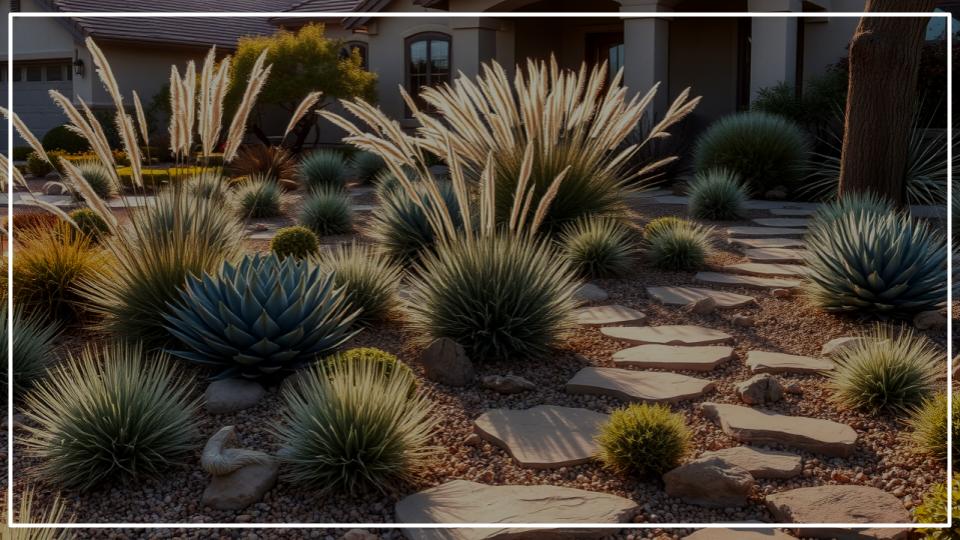
A lush, beautiful front yard is a hallmark of a well-loved home, but the endless cycle of watering, mowing, and fertilizing can feel like a burden—both on our time and on our precious water resources. What if you could cultivate a stunning landscape that not only turns heads but also sips, rather than gulps, water? This is the promise of a thoughtfully designed garden. We’re sharing seven easy xeriscaping ideas to help you create a resilient, elegant front yard that looks amazing without a sprinkler system in sight. Prepare to embrace a new kind of lush.
Key Takeaways: Your Path to a Water-Wise Garden
Short on time? Here’s what you need to know to begin your journey into drought-tolerant landscaping:
- Rethink Your Lawn: Swapping even a portion of your turf for gravel gardens, groundcovers, or expanded garden beds dramatically cuts down on water usage.
- Group Plants Wisely: Place plants with similar water needs together. This simple strategy, called hydrozoning, is the secret to efficient watering and healthier plants.
- Mulch is Your Best Friend: A thick layer of organic or inorganic mulch is the single best thing you can do to conserve soil moisture and keep your garden looking tidy.
- Go Native: Prioritize plants that are native to your region. They are naturally adapted to the local climate and will thrive with minimal intervention.
1. Redefine Your Lawn with Elegant Hardscaping
The single thirstiest element in most front yards is the traditional grass lawn. By reducing its size, you reclaim hours of your weekend and significantly cut your water bill. This doesn’t mean your yard has to be a barren expanse of rock.
Instead, think of creating a “living patio” with beautifully arranged hardscaping elements. Consider replacing a portion of your lawn with a sweeping path of decomposed granite or a sophisticated pea gravel courtyard. These materials create a clean, modern canvas that makes plants pop. In my own garden, I’ve found that combining smooth, dark-gray river stones with light-colored gravel creates a visual river that guides the eye and adds a sense of movement.
Arrange large, sculptural boulders or a series of flagstone pavers to create texture, seating areas, and destinations within the garden. According to the experts at Colorado State University Extension, well-planned hardscaping provides year-round structure and interest that a lawn simply cannot offer. This foundation allows your water-wise plants to truly shine as living sculptures.
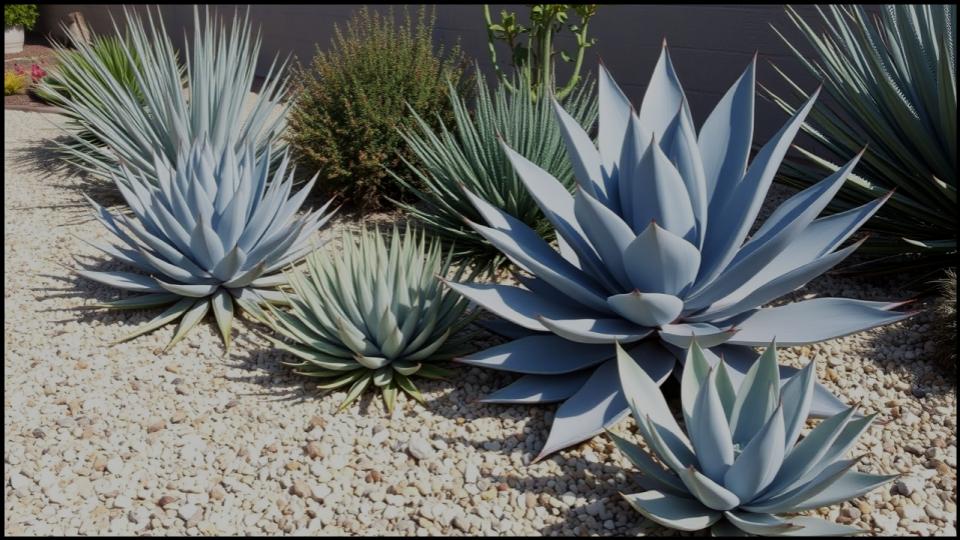
2. Weave a Tapestry of Drought-Tolerant Groundcovers
If you love the look of a green carpet but not the maintenance, living groundcovers are a spectacular alternative. Many require a fraction of the water of turfgrass once established and offer a rich tapestry of colors and textures.
Think beyond simple ivy. For sunny, dry areas, you can’t go wrong with varieties of Creeping Thyme (Thymus serpyllum), which releases a lovely fragrance when you walk on it and erupts in a sea of pink or purple flowers. Another favorite of mine is Ice Plant (Delosperma), whose jewel-toned, daisy-like flowers cover the foliage for months, creating a dazzling, low-maintenance mat. For tougher spots, the many varieties of Stonecrop (Sedum) provide incredible texture and color, from the chartreuse of ‘Angelina’ to the deep burgundy of ‘Dragon’s Blood’.
These plants are champions of drought-tolerant landscaping. They help suppress weeds, control erosion, and cool the soil, all while looking effortlessly chic between pavers or covering a gentle slope.
3. Embrace Smart Design with Hydrozoning
This may sound technical, but it’s a wonderfully simple principle: group plants together based on their water needs. This is perhaps the most important of all xeriscaping ideas for a thriving, low-effort garden. A common mistake I see is when a gardener places a water-loving rose right next to a drought-loving lavender. One of them will inevitably suffer.
The University of California’s Division of Agriculture and Natural Resources emphasizes that hydrozoning makes your watering efforts targeted and effective. Create distinct zones in your yard:
- Arid or Oasis Zone: This is the area farthest from your home or water source. It’s perfect for the toughest water-wise plants like yuccas, agaves, and many native grasses that need almost no supplemental water once established.
- Transitional Zone: This mid-zone can feature plants like Russian Sage (Perovskia atriplicifolia), Coneflower (Echinacea), and Black-Eyed Susan (Rudbeckia hirta), which need occasional watering during the hottest, driest parts of the summer.
- High-Water Zone (Optional): Reserve a small, manageable area near a doorway or patio for any thirstier favorites you just can’t live without, like a container of annual flowers. This concentrates your watering efforts in one small, high-impact spot.
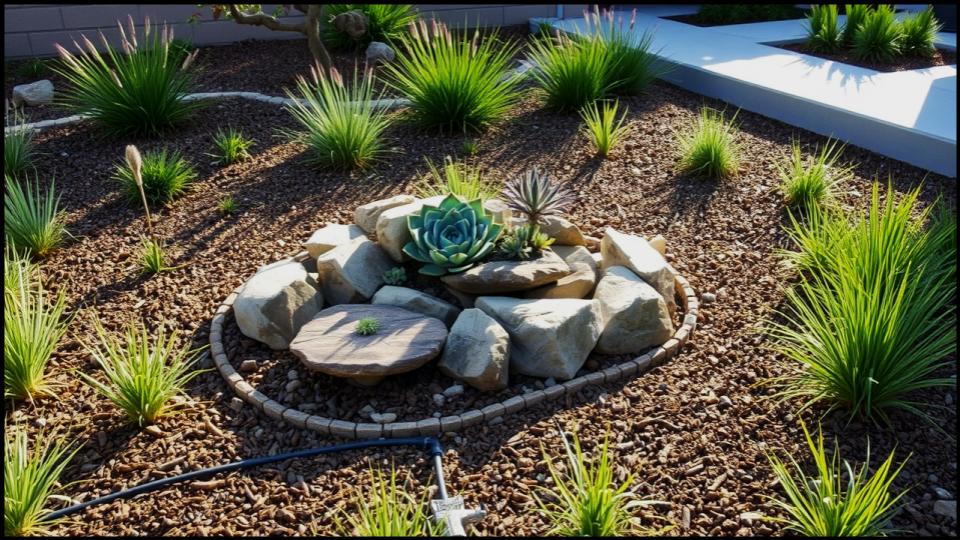
4. Make a Statement with Sculptural Plants
A low-water garden is the perfect stage for dramatic, architectural plants that provide year-round interest. These plants often have unique forms, bold textures, and striking silhouettes that function as living art. Instead of a sea of fussy flowers, you can create immense visual impact with just a few well-chosen specimens.
Look for plants that command attention:
- Agave: The classic choice for a reason. A single Century Plant (Agave americana) or the more compact and striking Agave ‘Blue Glow’ can anchor an entire garden bed.
- Yucca: Varieties like Adam’s Needle (Yucca filamentosa) send up towering stalks of creamy white flowers in the summer, adding vertical drama. The soft-leaved Yucca rostrata offers a stunning, spherical blue-gray focal point.
- Ornamental Grasses: Don’t underestimate the power of grasses. The feathery plumes of Pink Muhly Grass (Muhlenbergia capillaris) create a pink haze in the fall, while Blue Oat Grass (Helictotrichon sempervirens) offers a perfect, spiky mound of silvery-blue.
I always advise clients to invest in one or two larger, high-impact sculptural plants. They provide the “bones” of the design and make the entire landscape feel more intentional and established.
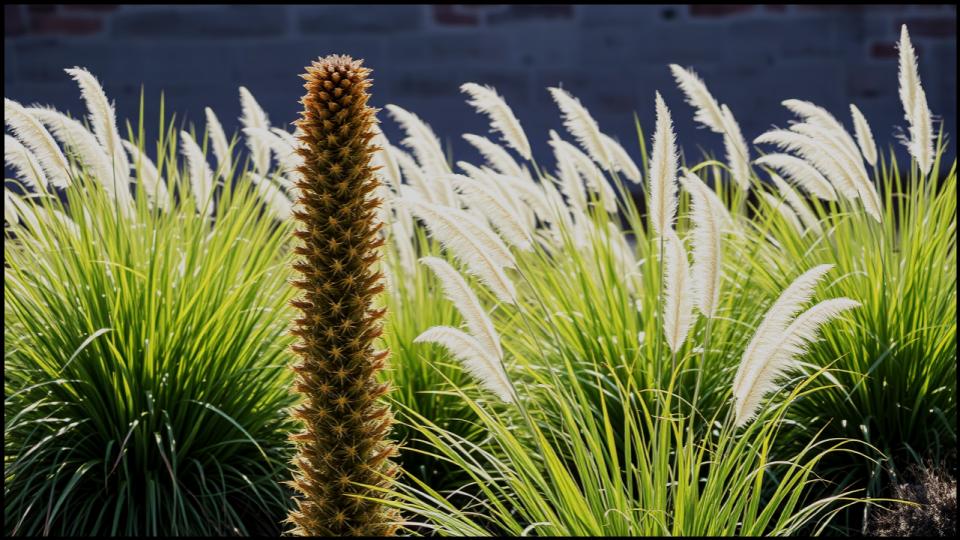
5. Carve a Path with a Dry Creek Bed
A dry creek bed is a masterful design trick that is both beautiful and highly functional. It’s essentially a shallow, winding swale lined with stones and boulders of various sizes that mimics the path of a natural stream. It provides immense visual interest, breaking up expanses of mulch or gravel and guiding the eye through the landscape.
Beyond its good looks, a dry creek bed is a workhorse for your low-water garden. It cleverly channels rainwater from your roof or paved surfaces during a downpour, directing it toward your plant beds where it can soak in deeply, rather than running off into the street. As a landscape designer, I find this is one of the best ways to passively water your garden and prevent erosion on slopes.
6. Harness the Power of a Mulch Masterpiece
Never underestimate the power of mulch. A three-to-four-inch layer of good quality mulch is the secret weapon of successful xeriscaping. It insulates the soil from the baking sun, drastically reduces water evaporation, and smothers most weeds before they can even start.
While organic mulches like shredded bark or wood chips are excellent because they break down to enrich the soil, don’t forget inorganic options. Pea gravel or crushed granite can serve as a permanent mulch in beds filled with succulents, cacti, and other arid plants that prefer drier, leaner conditions. As the U.S. Environmental Protection Agency’s WaterSense program notes, mulching is one of the simplest yet most effective water-saving techniques available to gardeners. It gives your garden beds a clean, finished look while creating a healthier environment for your plants’ roots.
7. Go Local with Native Plants
The most beautiful and sustainable xeriscaping ideas always start with plants that belong in your region. Native plants have spent thousands of years adapting to your specific climate, soil, and rainfall patterns. This means they are genetically programmed to thrive with little to no supplemental water, fertilizer, or pesticides once they are established.
Visiting your state’s native plant society website or your local university extension office is the best first step. They can provide lists of beautiful, resilient water-wise plants that will flourish in your yard and support local pollinators like bees and butterflies. I always tell gardeners, “Why fight your climate when you can work with it?” Choosing natives like Coneflower (Echinacea), Beardtongue (Penstemon), and local sages not only guarantees a lower-maintenance garden but also creates a landscape that feels authentic and connected to its surroundings.
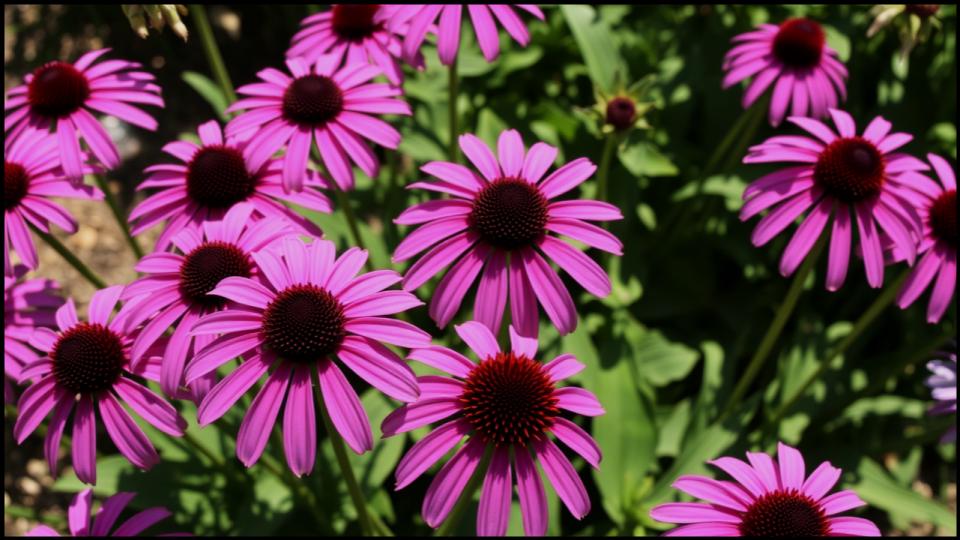
A Garden That Gives Back
Creating a beautiful front yard doesn’t have to be a constant battle against nature. By embracing these simple xeriscaping ideas, you can design a space that is not only breathtaking but also responsible and deeply rewarding. You’ll be crafting a personal oasis that saves water, reduces maintenance, and provides a resilient haven for years to come. Your new landscape won’t just look amazing—it will be a testament to the idea that thoughtful design and a gentle touch can create the most enduring beauty. Now you’re ready to trade in the sprinkler for a truly spectacular, sustainable garden.
Read More
Keep Your Houseplants and Garden Alive While You Travel—No Tech Required
